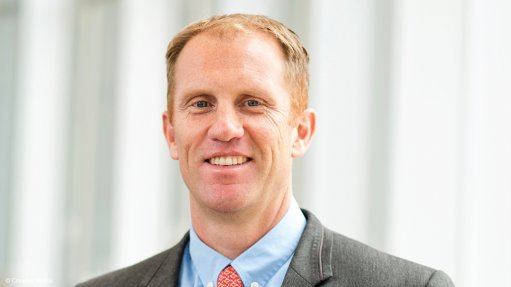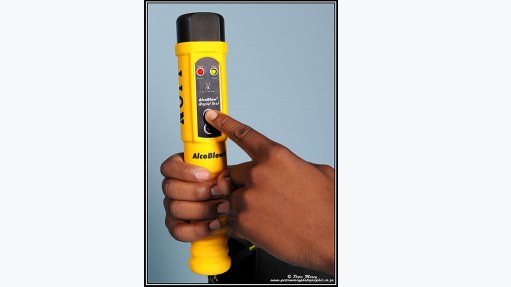IMF says Ukraine war is setting back Africa’s economic recovery, climate plans
All positive momentum gained in recovering from Covid-19 in sub-Saharan Africa has been lost, as monetary policies are focused on preservation rather than growth amid volatile market conditions globally, International Monetary Fund (IMF) assistant director for Africa Papa N’Diaye said this week.
During his first visit to South Africa and presenting at a University of the Witwatersrand (Wits) event on June 7, he unpacked the IMF’s Regional Economic Outlook for sub-Saharan Africa that was published in April.
The IMF observed surprising economic recovery rates in the region by the second half of 2021, and revised upwards its gross domestic product (GDP) growth prediction for the region to 4.5% for the year; however, following the harsh impacts of the war in Ukraine, the IMF has now lowered its GDP growth expectation to 3.8% for this year.
This pace of growth is not enough to make up for lost ground from the pandemic and will make it harder for the region to achieve the United Nations Sustainable Development Goals.
Most notably, surging oil and food prices are straining the external and fiscal balances of commodity-importing countries, and leaving many countries in a food insecure state.
High food prices are also hampering manufacturing output and harming the most vulnerable segments of the population.
N’Diaye mentioned that there had been windfall gains for oil exporters in recent months, but this was outweighed by sizeable terms-of-trade shocks for most of the region.
The economic shock caused by the war also threatens to compound some of sub-Saharan Africa’s most pressing policy challenges, including Covid-19’s social and economic legacy, climate change, heightened security risks in the Sahel and the impact of ongoing tightening of monetary policy in the US.
N’Diaye pointed out that a prolonged war in Ukraine may increase commodity prices further, potentially leading to food crises in some countries, boosting risk premiums and weakening global demand.
Sub-Saharan Africa is particularly vulnerable to sharper-than-expected monetary tightening in various parts of the world and slowdowns of growth in major trading markets such as China and Europe.
Spiking interest rates, coupled with rising inflation and exchange rate pressure, have caused difficult financial conditions for the region. Inflation has increased by an average 11.5% in sub-Saharan Africa over the last few months.
Since output levels remain well below pre-pandemic trends in most countries, central banks are facing a difficult balancing act between curbing inflation and supporting growth.
N’Diaye suggested that central banks monitor price developments carefully, stand ready to increase rates if inflation expectations drift up, guard against the financial stability risks posed by higher interest rates and maintain a credible policy framework underpinned by strong independence and clear communication.
He explained further that the fallout from the war in Ukraine was hitting the region at a time when fiscal space was limited, and public debt ratios were at their highest levels since the turn of the century.
“Therefore, fiscal policy responses need to be cautiously calibrated and targeted at protecting the most vulnerable households from rising food and energy prices, without adding to debt vulnerabilities.”
This will require a significant reprioritisation of spending, particularly in commodity-importing countries, for example, eliminating wasteful subsidies to State-owned enterprises.
In the longer term, governments and financial organs of State would need to pursue fiscal consolidation to reduce debt vulnerabilities, mobilise more revenues – other than simply collecting more tax, pursue and promote economic diversification and fully leverage the private sector’s potential, N’Diaye said.
For example, the clean energy transition presents opportunities for diversification and contributes to climate change mitigation solutions, since sub-Saharan Africa is among the regions hardest hit by environmental shocks.
The IMF estimates that $435-billion is needed for the region to recover from the Covid-19 pandemic, and between $30-billion and $50-billion a year is needed for climate change adaptation.
For commodity importers, the war in Ukraine is adding between $6-billion and $10-billion to financing needs.
In reply to many of the issues discussed in the IMF’s Regional Outlook report, Wits School of Economics and Finance academic economist Kenneth Creamer commented that pupils in sub-Saharan Africa missed 128 days of school in 2020, on average, compared with the 84 days lost, on average, in first-world countries.
That contributes to the education and ultimately labour market challenges on the continent.
He attributed the excessive gap partly to the region’s inaccessibility to Covid-19 vaccines for a prolonged period.
Creamer mentioned that although South Africa and Senegal were now producing vaccines on the continent, the global and even local markets were often hesitant to buy Covid-19 vaccines amid limited demand from citizens who, in many countries, remain hesitant to be vaccinated against Covid-19.
As of early April, only 12.2% of the population in sub-Saharan Africa had been fully immunised against Covid-19, compared with a 74% vaccination rate in advanced economies.
This renders Africa still vulnerable to the virus and poses a risk to future recovery beyond the war in Ukraine.
N’Diaye acknowledged that there had been a call for local vaccine production in Africa, only for it to be followed by low demand. He suggested that these facilities be made more sustainable by producing different types of vaccines.
“A longer-term solution involves establishing a sustainable ecosystem for local vaccine production that would require specialised equipment, a highly trained workforce, a conducive investment climate, and a predictable and stable demand for vaccines from African countries.”
SOUTH AFRICAN PERSPECTIVE
IMF resident representative Max Alier, meanwhile, highlighted that South Africa was already stuck in a low-growth equilibrium before any of the recent worldwide shocks happened, with unemployment increasing, GDP per capita declining and inequality widening.
Additionally, he mentioned that government’s numerous expansionary policies effected in recent years had not yielded any growth and merely left the country with more public debt.
Although the higher commodity prices have helped to keep the South African economy afloat, Alier averred that it was a “jobless recovery” and that it would not last long enough to sustain new job creation.
“South Africa is still being held back by structural issues, including energy security and logistics issues. Moreover, policies often make it difficult for businesses to operate, while our labour market is plagued by a low quality of education.”
The IMF is expecting a 1.9% GDP growth rate for South Africa this year.
Alier cautioned government not to enter into any expenditure on the back of improved terms-of-trade that could not be sustained.
He also recommended that government and State organs focus on climate change mitigation, energy security and creating conditions wherein small and medium-sized enterprises could flourish.
Comments
Press Office
Announcements
What's On
Subscribe to improve your user experience...
Option 1 (equivalent of R125 a month):
Receive a weekly copy of Creamer Media's Engineering News & Mining Weekly magazine
(print copy for those in South Africa and e-magazine for those outside of South Africa)
Receive daily email newsletters
Access to full search results
Access archive of magazine back copies
Access to Projects in Progress
Access to ONE Research Report of your choice in PDF format
Option 2 (equivalent of R375 a month):
All benefits from Option 1
PLUS
Access to Creamer Media's Research Channel Africa for ALL Research Reports, in PDF format, on various industrial and mining sectors
including Electricity; Water; Energy Transition; Hydrogen; Roads, Rail and Ports; Coal; Gold; Platinum; Battery Metals; etc.
Already a subscriber?
Forgotten your password?
Receive weekly copy of Creamer Media's Engineering News & Mining Weekly magazine (print copy for those in South Africa and e-magazine for those outside of South Africa)
➕
Recieve daily email newsletters
➕
Access to full search results
➕
Access archive of magazine back copies
➕
Access to Projects in Progress
➕
Access to ONE Research Report of your choice in PDF format
RESEARCH CHANNEL AFRICA
R4500 (equivalent of R375 a month)
SUBSCRIBEAll benefits from Option 1
➕
Access to Creamer Media's Research Channel Africa for ALL Research Reports on various industrial and mining sectors, in PDF format, including on:
Electricity
➕
Water
➕
Energy Transition
➕
Hydrogen
➕
Roads, Rail and Ports
➕
Coal
➕
Gold
➕
Platinum
➕
Battery Metals
➕
etc.
Receive all benefits from Option 1 or Option 2 delivered to numerous people at your company
➕
Multiple User names and Passwords for simultaneous log-ins
➕
Intranet integration access to all in your organisation





















